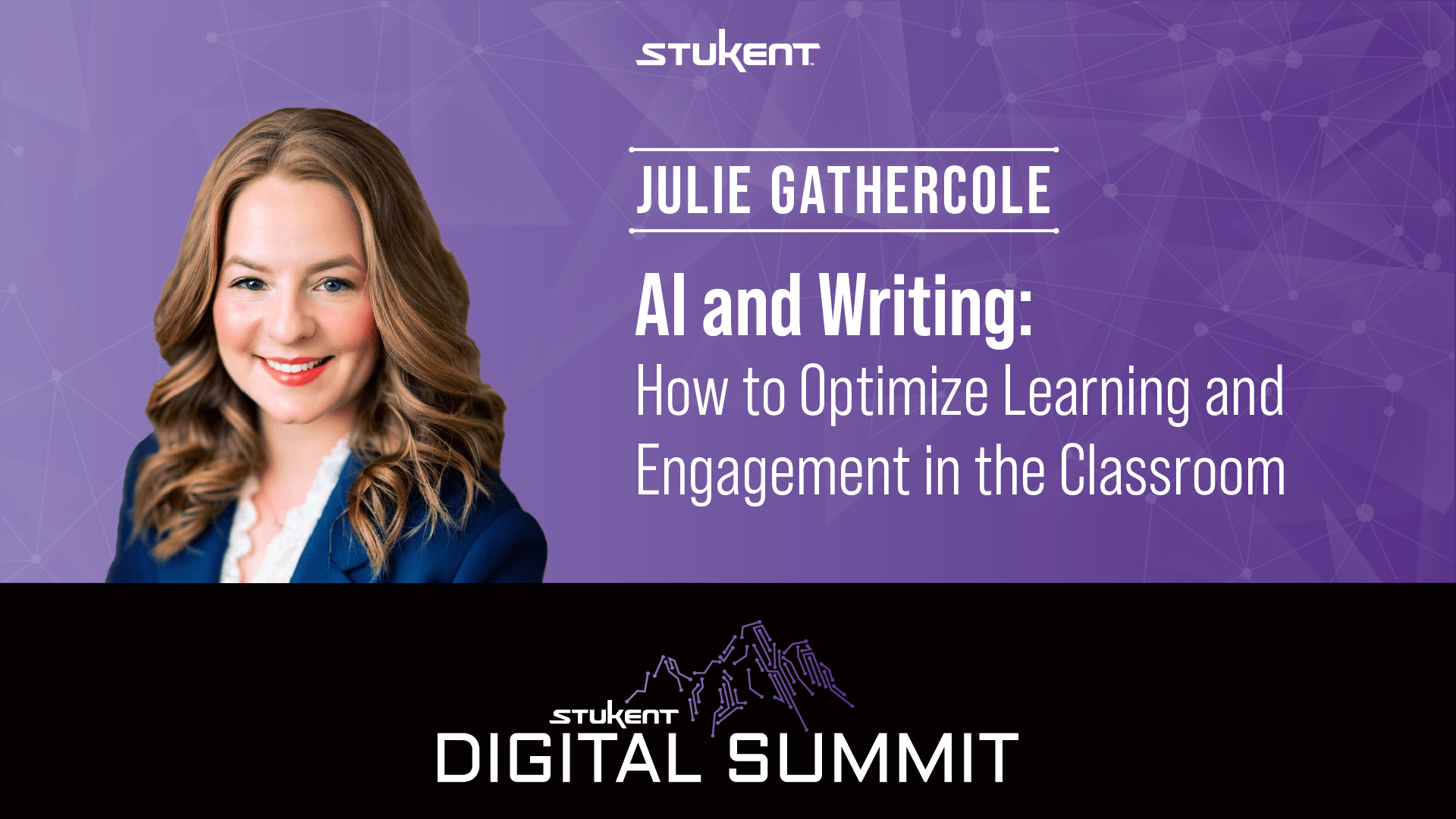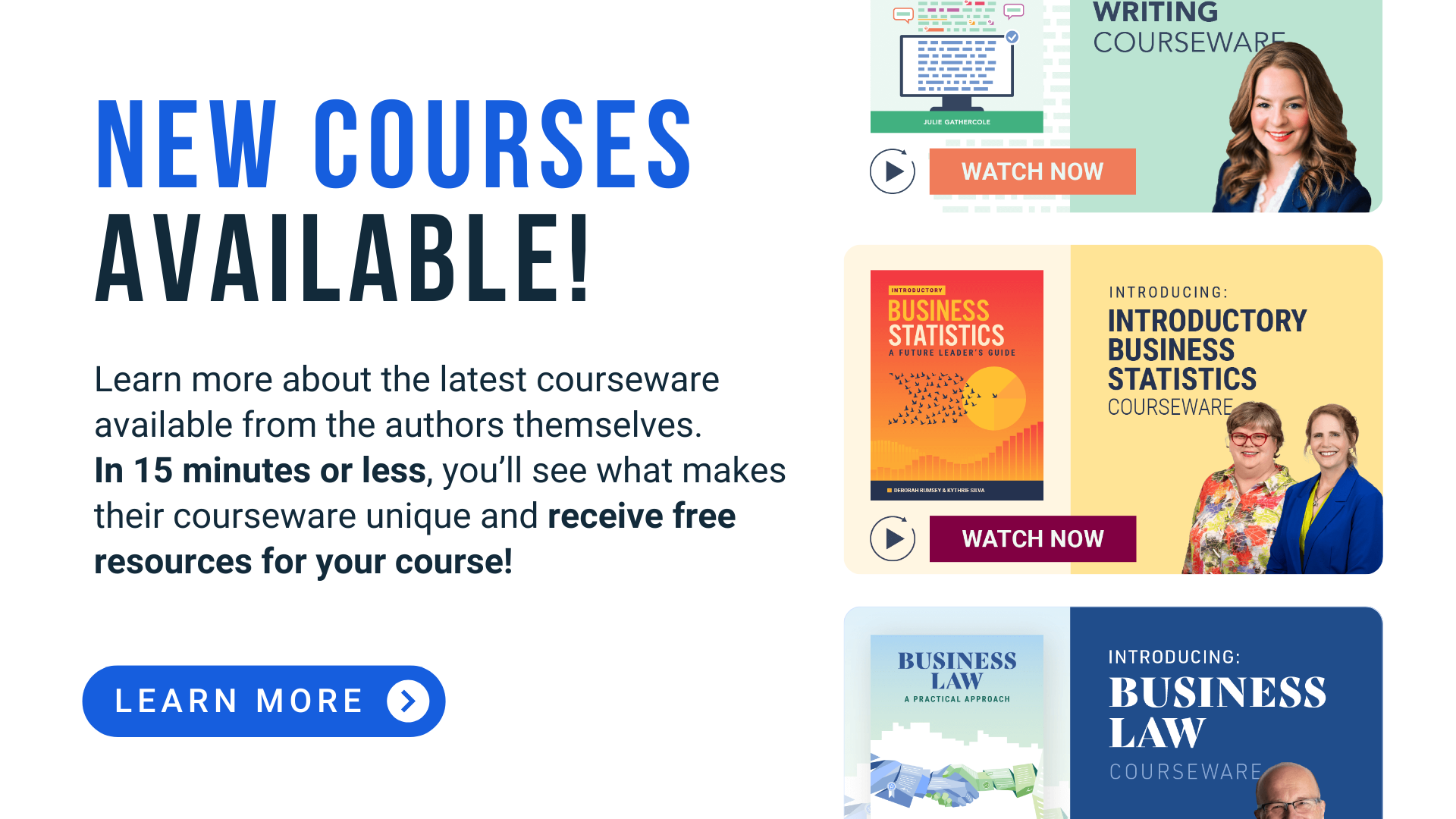The writing world has experienced many shifts in the last decade. These shifts include the massive digitization of content, a transition from physical to online consumption, the rise of short-form content, increased interactivity with consumers, and more. With these shifts, it is essential for educators and future writers to adapt to these changes.
Julie Gathercole, an assistant professor at the Bissett School of Business at Mount Royal University, shared the changes in business writing and the role of AI in this evolution in her recent Stukent® Digital Summit: Communication, Reputation, & Automation online session. Watch her session below or read on for a recap of her insights!
Shifts in Writing, Students, and Educators
It is easy to recognize the changes in the role of writing in a business. With AI-powered content creation on the rise, how we generate and consume content is rapidly transforming.
It is important to note that students are also changing.
Julie highlighted that students, especially Gen Z, have different priorities and challenges. She shared a study that showed Gen-Z students are more focused on their careers, value skills that lead to employment, have progressive values, are highly connected, and often face distractions due to their digital native upbringing. This shift in student demographics requires educators to adapt their teaching methods and content to meet these changing needs.
She stressed that educators must adapt and equip students with skills relevant to the modern job market and emphasized the need to incorporate AI into the classroom, fostering skills and familiarity with this technology.
“[Understanding and using AI tools] is a skill set employers expect students to have,” Julie said. “If we pretend that AI doesn’t exist or don’t encourage the use of those skill sets, students are going to fall behind.”
Understanding How Students Can Use AI
AI writing tools, like ChatGPT, are part of a broader spectrum of AI tools and should be seen as a device to enhance the writing process, not replace it. AI tools still need humans to write prompts, revise content for appropriate language or tone, revise for biases, review for accuracy, and add links for sources.
“I teach a course about marketing trends and we talk a lot about content marketing,” Julie said. “[In the classroom] we use AI and test it out to create various content. Then we assess that content to determine whether or not it matches the brand voice we’re looking for and discuss how we can tweak it.”
Julie commented on different categories of AI writing tools, including content generators, which can help create anything from blog posts to social media captions. She noted that AI can streamline content creation, particularly in fast-paced, 24/7 news and social media industries.
Here are the tools she shared:
- Grammar and Spellcheckers: Grammarly, ProWritingAid, Ginger
- Style and Clarity Enhancers: Hemingway Editor, StyleWriter
- Resume and Cover Letter Generators: Rezi, Zety
- Text Summarizers: QuillBot, SummarizeBot
- Voice-to-Text Converters: Otter.ai, Riverside
- Content Generators: ChatGPT, Jasper, Copy.ai, Writesonic, Anyword
In contrast to content generators, AI content detectors can help identify AI-generated content. Julie shared a list of detectors professors and students can use:
The Risks and Ethical Use of AI
Some risks with using AI include copycat content, factual errors (AI tends to make up facts), and ethical concerns. Julie emphasized that human direction and instructions are crucial to using AI effectively. She urged educators to guide students on ethical AI use and citation.
AI content can also be flagged as spam on search engines. “If you’re using AI to create content that you’re then using to boost your search engine ranking, it can be flagged by Google,” Julie explained. “Google is saying they do not want AI copy permeating content creation, so if you just lift and copy to your web page, it will likely be flagged by Google.”
She also emphasized the value of the writing process in helping students formulate their thoughts and ideas. While AI can assist in many ways, the foundational skills of critical thinking, problem-solving, and creativity remain crucial.
“We want to make sure we’re discussing the value of formulating your own thoughts,” Julie said. “If we think about where students are going to be in the business world, right, they have to be able to come up with their own with their own thoughts and ideas.”
AI can be beneficial for creating outlines, finding missing pieces, or polishing sentences in your writing. Julie shared how you can design your prompts to do this: https://youtu.be/thrPQA0Jnp8?feature=shared&t=1356.
Julie recommends using AI in the classroom and with your students to assess the accuracy of AI, which you can practice through individual assignments or in a classroom exercise. She introduced the “SPACE Model” for AI writing, a four-step approach:
Setting Direction: Determine the purpose, audience, and tone.
Prompt Creation: Formulate specific and clear prompts.
Assess and Create: Evaluate the AI-generated content, adjust, and create.
Edit: Edit the content for accuracy, bias, and completeness.
“The best writing comes from human experience,” Julie said as she wrapped up her session. “AI isn’t a replacement for that. It does not replace great writing and having our own experiences; it is not a substitute for the foundations. You have to understand the writing foundations to know whether or not what you’re getting from AI is usable.”
“AI is going to stick around, so we need to embrace it,” she continued. “We need to figure out how to use it in our classrooms and engage students with it.”
Julie’s session shed light on the changing landscape of business writing, the influence of AI, and the evolving needs of students. She emphasized the value of AI skills in the modern job market while reminding everyone that AI is a tool that enhances, not replaces, the writing process.
Stukent Digital Summit: Communication, Reputation, & Automation was held online on October 13, 2023. If you want to see Stukent’s upcoming events, visit the Events page on our website.
Stukent is here to help educators help students help the world. To learn more about our first-in-the-world Simternships™ and courseware, or to get FREE instructor access to our resources, visit our website.







